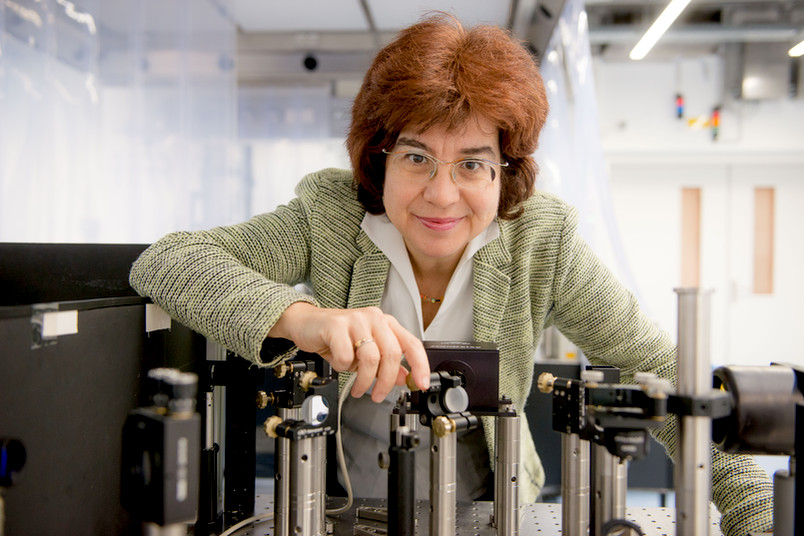
Chemists at Ruhr-Universität Bochum have developed a new method that allows them to map changes in the dynamics and structure of water molecules in the vicinity of solutes. With this technique, called terahertz calorimetry, they investigated the properties of the hydration shell of dissolved alcohol molecules. In the future, they want to also use the method for water mapping around more complex systems such as enzymes, which can be important for drug design.
The results were published by Prof Dr Martina Havenith, chair for Physical Chemistry II and spokeswoman for the cluster of excellence Resolv, with Dr Fabian Böhm and Dr Gerhard Schwaab in the journal Angewandte Chemie.
Fundamental biological processes such as enzymatic catalysis or molecular binding occur in aqueous phase. Calorimetry serves as a powerful biophysical tool to study the molecular recognition and stability of biomolecular systems by measuring changes in thermodynamic state variables, e.g. upon protein folding or association, for the purpose of deriving the heat transfer associated with these changes. Calorimetry determines, enthalpy and entropy, which are measures of the heat transfer and disorder in the system.
Calorimetry is restricted to timescales of 1 to 100 seconds. In contrast, spectroscopic processes, which are based on short laser pulses, are able to perform measurements on the time scale of a millionth or a billionth of a second. The Bochum-based chemists showed that both approaches are complimentary.
"By establishing a terahertz calorimeter in a proof of concept experiment, we have achieved the first aim that we had been working on using the Advanced Grant funds from the European Research Council," explains Martina Havenith. In 2016, she was awarded the grant endowed with 2.5 million euros.
A shell of surrounding water molecules, the hydration shell, forms around any dissolved molecule. The solute affects the regular network of hydrogen bridges between the water molecules, causing the water in the hydration shell to behave differently to the free water. The structure of the hydration shell depends on the shape and the chemical composition of the dissolved molecule.
Lab Quality Management Certificate
The Lab Quality Management certificate is more than training—it’s a professional advantage.
Gain critical skills and IACET-approved CEUs that make a measurable difference.
Havenith's team investigated the hydration shell of five different alcohol chains and were able to classify differently structured hydration water by terahertz calorimetry. Exposure to terahertz pulses provides fingerprints of the vibrations within the water network. This, in turn, allows the researchers to deduce fundamental quantities such as entropy and enthalpy.
"The method allows us for the first time to spectroscopically map entropy and enthalpy around solutes, which are crucial parameters to characterize molecular recognition," summarizes Havenith.











